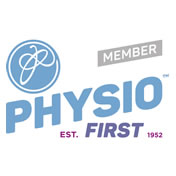Hereditary Spastic Paraplegia (HSP) is a hereditary and progressive neurological disorder causing a gradual degeneration of the upper motor neurones within the brain and the spinal cord. This results in a general reduction in muscle strength and control, alongside progressive spasticity of the lower limbs. There are many individual types of HSP, and symptoms may become apparent at any age though most initial symptoms are evident during childhood or within the 2nd and 3rd decades of a person’s life. As many of the early signs and symptoms of HSP affect the lower limb function, difficulties are often first noticed when a person begins to catch their toes when walking more frequently, or finds that they are losing their balance and falling over regularly. Progressively, an individual will notice that their general lower limb strength is reducing, but they will also begin to experience spasms within their legs that cause the lower limbs to feel stiffer. This combination of stiffness and weakness in the lower extremities affects the general co-ordination and control of the legs when walking, when standing up from sitting, and when climbing stairs etc., which over time leads to an overall decline in an individual’s physical ability and function.
 It is not uncommon for individuals with HSP to present with other symptoms associated with their disease process such as sensory loss within the legs and feet, altered bladder and bowel function, and clonus (‘jumping feet’). As a result of the altered muscle activity in the lower limbs, secondary musculoskeletal problems may also arise, for example, high aches of the feet, shortened Achilles tendons and deformities of the toes.
It is not uncommon for individuals with HSP to present with other symptoms associated with their disease process such as sensory loss within the legs and feet, altered bladder and bowel function, and clonus (‘jumping feet’). As a result of the altered muscle activity in the lower limbs, secondary musculoskeletal problems may also arise, for example, high aches of the feet, shortened Achilles tendons and deformities of the toes.
As individuals vary from one another in the presentation of their disease, physiotherapy management is dependent upon a person’s specific symptoms, the rate at which their disease process is occurring and the stage that their HSP has reached. In general however, physiotherapy intervention will focus on addressing any muscle tightness, spasm and associated pain, maintenance of joint mobility, postural re-education and core muscle training, and aims to maintain functional independence for as long as is possible. As an individual’s functional capability changes, walking aids and adaptations may need to be introduced to assist in day-to-day activities and to continue to support the physical needs of that person.
Physiotherapy plays an important part in managing the physical difficulties associated with HSP, but also in supporting the emotional needs of the individual. HSP is a challenging disorder to live with and therefore involving experienced health practitioners who can offer the correct level of support and advice is crucial if an individual is to achieve their maximum potential at all times throughout the various stages of their disease.
If you would like to know more about physiotherapy for HSP, or how we can help you or a member of your family who may have HSP, please get in touch.





